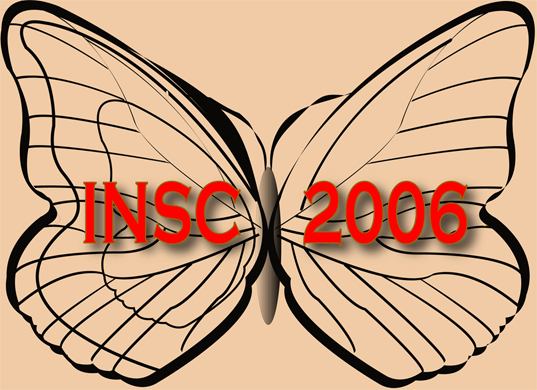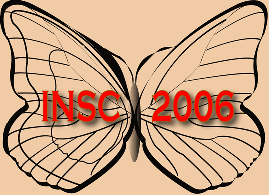  We are
Proud and Excited to Announce
INSC-2006
Conference
Speakers We are
Proud and Excited to Announce
INSC-2006
Conference
Speakers
|
|
|
|
|
Professor Dr. Peter Allen |
|
|
|
Professor of Evolutionary Complex Systems and Head of the Complex Systems Management Centre which is involved in a wide range of research projects including working with: Glasgow Centre for Population Health, Asian Development Bank, the Tyndall Centre and EABIS. He has also co-ordinated the ESRC priority network `NEXSUS` over the past five years. NEXSUS is continuing with two collaborating projects from NEXSUS partners - an ESRC- funded joint project with the University of Sheffield "Modelling the Evolution of the Aerospace Supply Chain" and an IMRC-funded feasibility study "Impact of industrial clusters on evolution." For almost 20 years Professor Allen has been working on the mathematical modelling of change and innovation in social, economic, financial and ecological systems, and the development of integrated systems models linking the physical, ecological and socio-economic aspects of complex systems as a basis for improved decision support systems. |
“Complexity: the Challenge of a co-evolving Epistemology and Ontology”If epistemology is about what we know and how we know what we know – what is inside - and ontology is about what there is to know – what is outside – then the most fundamental challenge that complexity makes is that these can no longer be considered as separable. Traditional science was based on the idea that there was an objective reality outside, and that we could study it and do experiments on it that allowed us to build, cumulatively, an increasingly accurate picture of that reality. Whilst for simple physical problems, and for planetary motion, this was a reasonable working hypothesis, for biological and social systems this has always been a problem. Experiments are not repeatable or transferable, and situations are historically evolved involving local, co-evolving contexts, and therefore can potentially all be unique and lacking in any generic behaviours or laws. Complexity science brings us face to face with this elusive reality, and tells us that we must accept uncertainty, and admit that our cognition, our descriptions and our models are necessarily incomplete and temporary props to our current functioning. They help us make some sense of the past and the present, and are all we have to help us in taking steps into the future. Examples of these ideas will be given for ecological, social and economic systems, showing that models, despite their necessary incompleteness, can still be useful in clarifying and living with some of the real uncertainties we have, and in this way can help us explore possible futures. However, complexity also tells us that we need not limit our explorations to those suggested by our models, since they are necessarily incomplete, and that we should also indulge in “creative actions” in order to find out more about what might happen, and in this way both increase our possible choices of action, and also improve the scope of our models.
|
|
|
Professor Dr. Tassos Bountis |
|
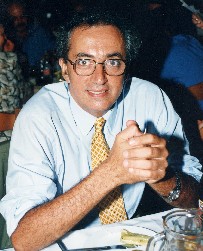 |
Tassos Bountis is
a Professor of Mathematics at the
University of Patras, since 1990. He graduated from
Athens College in 1969 and did his undergraduate studies
at Dartmouth College, U.S.A., and his postgraduate
studies at the University of Rochester, where he
obtained his Ph.D on Theoretical Physics in 1978. He
taught Applied Mathematics and Nonlinear Dynamics at the
Universities Cal Tech, Clarkson and Austin, U.S.A. and
Amsterdam, the Netherlands. He was one of the first
Greek scientists, whose research and teaching was
devoted to the study of Nonlinear Dynamics and the
Theory of Chaos already from the 1970’s. Returning to Greece, he organized from 1986 until today 4 international conferences and 18 summer schools on topics of Chaos, Fractals and Complexity (the most recent ones are “Complexity in Science and Society”, Patras and Olympia Greece, July 2004 and the 18th Summer School at Volos, Greece, July 2005). He is heading a Panhellenic Organizing Committee of Greek scientists from many fields, with whom he has edited 8 volumes of the series “Order and Chaos” (in Greek). He is a member of the editorial board of 4 International Journals of Nonlinear Dynamics and Applied Mathematics. His research projects are frequently funded by the Greek Government and the European Union and he is a member of the National Council of Research and Technology of Greece. At the University of Patras, he founded in 1996 the Center for Research and Applications of Nonlinear Systems (CRANS, http://www.math.upatras.gr/~crans), whose purpose is to support collaborative research and other scientific activities of Greek scientists in the fields of Nonlinear Systems, Chaos and Complexity. He is the author of 130 papers in scientific journals and conference proceedings and 4 Greek textbooks on these topics. His last book, “The Wonderful World of Fractals”, published by Leader Books in 2004, has received favorable reviews and has become popular for its educational character and aesthetic format. |
|
“The New Science of Complexity: Promises and Challenges for the 21st Century” Ever since the 1970’s, there has been revolutionary progress in the development of new theoretical approaches, computational methods and experimental discoveries, aiming to unravel the mysteries of unpredictable, irregular, chaotic or briefly “complex” phenomena, occurring in virtually all applied and engineering sciences. New theorems of Pure Mathematics, accompanied by a remarkably fruitful exploration of a variety of models using sophisticated numerical techniques, have led scientists to believe that a number of intricate and unexplained problems arising in physical, biological, engineering and even social scientific disciplines can now begin to be understood. The Theory of Chaos was advanced as a means of exploring the unpredictable evolution of dynamical systems like the weather, the electrocardiogram and encephalogram, nonlinear mechanical, chemical and electrical oscillations, seismic activity and even stock market fluctuations. The Geometry of Fractals was developed in parallel and proved quite successful in analyzing the intricate nature of objects such as trees and rocks, the consistency of tumors, the dendritic structure of the bronchial tubes of the lungs, the cardiac muscle network and the blood circulatory system. Thus, Chaos and Fractals became the main pillars of what was to emerge as the new science of the 21st century called Complexity. In this lecture, I will describe some indicative applications of Chaos and Fractals, by reviewing results obtained by our team at the Center of Research and Applications of Nonlinear Systems at the University of Patras. The emphasis will be on complex physical and biological systems, as well as social models inspired by the theory of paradoxical games. Philosophical Remarks The remarkable progress in the new science of Complexity over the last 3 decades has led to a number of conclusions that go much beyond the realms of a purely scientific and technological advancement. Here are some of the important lessons we have learned: A) We have discovered that chaos, or the loss of order and predictability, is NOT a property of large and complicated systems, consisting of a huge number of interacting units. Even simple models, involving very few agents can exhibit incredibly complicated behavior. For example, every one knows that the normal relationship of a married couple can become enormously complex as soon as a 3d person enters between them. On the other hand, the behavior of a very large crowd in a parade, a religious ceremony or a peaceful demonstration can be perfectly regular, orderly and predictable! B) Complexity and disorder do not necessarily lead to uncertainty, or decay to some equilibrium, as ordinary thermodynamics would have us believe. NEW STRUCTURES can emerge out non-equilibrium processes and order can be born out of chaos, following a process called SELF-ORGANIZATION. In other words, Complexity is the mother of new ideas, entities and forms that can solve old problems, leading to a higher, more advanced state of affairs. C) Complexity provides a guarantee for the dynamical stability of our world. By allowing all different living beings, races, religions and nations to coexist in an environment of mutual dependence and respect, complexity offers the opportunity for prosperity and survival, much as we see in wild natural animal habitats, jungles, etc. On the other hand, when ONE species, one religion, one ideology or one nation tries to dominate all others, it can be the cause of great instability and disaster! D) Complexity is beautiful! How else can we explain the elation we feel when gazing at a starlit night sky, the waves of a stormy sea, the dancing flames in a fire, or the stalactite and stalagmite formations in an ancient cave? |
|
|
Professor Dr. Stephen J. Guastello |
|
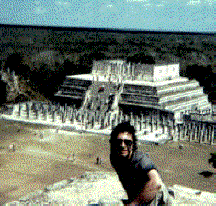 |
Professor of Psychology at Marquette University in Milwaukee, WI USA where he specializes in industrial-organizational psychology and human factors engineering. He is the author of the books Chaos, Catastrophe, and Human Affairs and Managing Emergent Phenomena, and over 100 journal articles and book chapters on various topics related to psychology and nonlinear dynamics. He is a past president of the Society for Chaos Theory in Psychology & Life Sciences, and currently the Editor in Chief of the journal, Nonlinear Dynamics, Psychology, and Life Sciences. |
|
Leadership Emergence in Coordination-Intensive, Creative Problem Solving, and Production Groups In self-organizing processes, a system acquires a structure without any external intervention. This presentation describes the process by which an initially leaderless group differentiates into one containing leadership and secondary role structures and how the process was aptly described by the swallowtail catastrophe model [1]. A subsequent study identified the control variables in the process of leadership emergence in creative problem solving and production-oriented groups [2] which were found to be different in the two cases. The third study, which is considered in greater depth here, examined a different case of coordination-intensive groups [3] Coordination-intensive groups are particularly interesting because it is known that coordination can occur without talking and without leaders present, even though talking helps in some respects [4]. Coordination is also interesting because it is a nonlinear dynamical process all by itself [5]. In the experiment on coordination and leadership emergence, the participants (N = 104, group size = 4) played a coordination card game in which 13 of the groups were not allowed to talk to each other, and 13 groups were allowed to talk. After playing the game, the participants rated each other on leadership behavior, styles, and variables related to the process of conversation. Participants could identify no one as the leader or contributor of particular conversational remarks. Ironically, the levels of leadership emergence were equivalent in both verbal and nonverbal groups. A swallowtail catastrophe model was obtained here also, showing that the three control variables were: a broad range of task participation behaviors, whether the group worked verbally or nonverbally, and behaviors specific to task control. The study also represents a convergence between two independent lines of nonlinear dynamics research in group processes. [1]. Guastello, S. J. (1998). Self-organization and leadership emergence. Nonlinear Dynamics, Psychology, and Life Sciences, 2, 303-316. [2]. Guastello, S. J., Craven, J., Zygowicz, K. M., & Bock, B. R. (2005). A rugged landscape model of self-organization and emergent leadership in creative and production groups. Nonlinear Dynamics, Psychology, and Life Sciences, 9, 297-334. [3]. Guastello, S. J., & Bond, R. W. Jr. (2005, Aug). Leadership emergence in coordination-intensive groups. Papers presented to the 15th Annual International Conference of the Society for Chaos Theory in Psychology & Life Sciences, Denver. [4]. Guastello, S. J., Bock, B. R., Caldwell, & Bond, R. W., Jr. (2005). Origins of coordination: Nonlinear dynamics and the role of verbalization. Nonlinear Dynamics, Psychology, and Life Sciences, 9, 175-208. [5]. Guastello, S. J. (2002). Managing emergent phenomena: Nonlinear dynamics in work organizations. Mahwah, NJ: Lawrence Erlbaum Associates. |
|
|
Professor Dr. Wolfgang Tschacher |
|
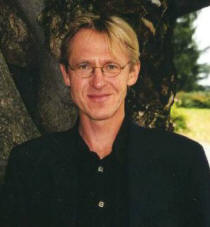 |
Head of research of the Department of Clinical Psychology and Rehabilitative Psychiatry, University Psychiatric Services Bern, Switzerland. |
|
Self-Organization of Cognition My long-standing interest is the application of self-organization theory (synergetics) to clinical psychology (especially, psychotherapy process [4]) and neurocognition (gestalt phenomena [1], connectivity in the brain). We conducted numerous projects showing that finger prints of nonlinear systems, such as hysteresis and complexity reduction, are ubiquitous in these fields. Nonlinear phenomena are often related to meaningful variables of functioning (in psychopathology) and therapy outcome [3]. The self-organization approach may even be instrumental in linking first-person and third-person perspectives in cognition [2]. [1]. Tschacher W, Schuler D, & Junghan U (in print). Reduced Perception of the Motion-Induced Blindness Illusion in Schizophrenia. Schizophrenia Research. [2]. Tschacher W, Dauwalder J-P, & Haken H (2003). Self-Organizing Systems Show Apparent Intentionality. In: Tschacher W & Dauwalder J-P (eds), The Dynamical Systems Approach to Cognition, (183-200). Singapore: World Scientific. [3]. Tschacher W, Baur N, & Grawe K (2000). Temporal Interaction of Process Variables in Psychotherapy. Psychotherapy Research, 10, 296-309. [4]. Tschacher W, Scheier C and Grawe K (1998). Order and Pattern Formation in Psychotherapy. Nonlinear Dynamics, Psychology and Life Sciences, 2, 195-215. |
|
